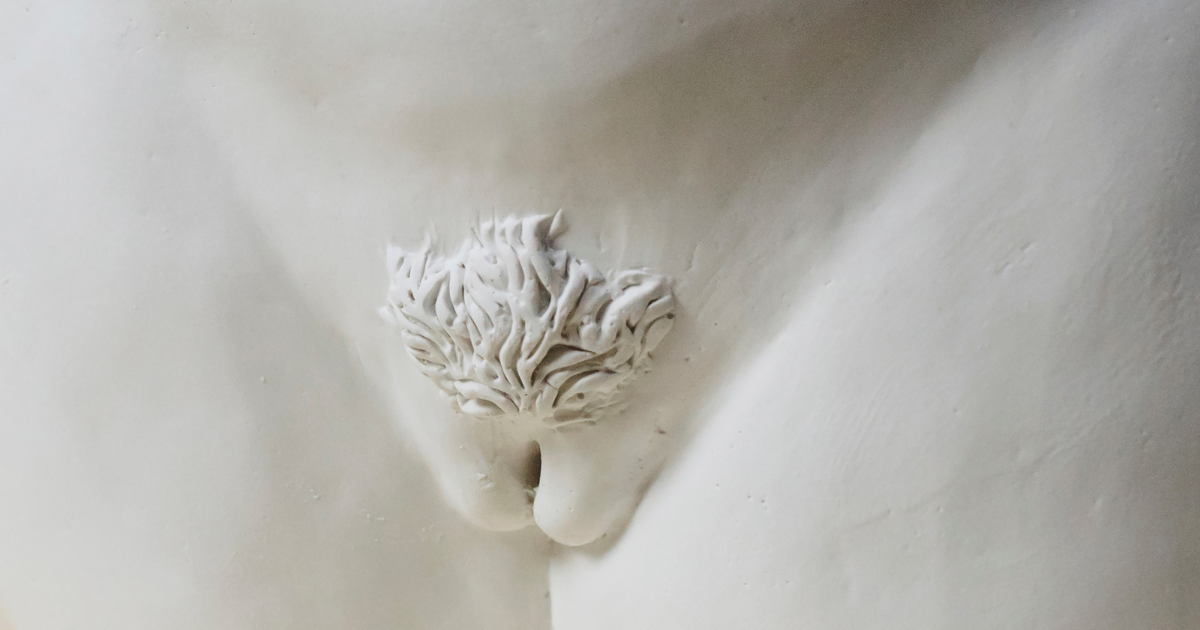Painful Penetration: Why It Happens And What To Do

Have you ever been having sex and all of a sudden it hurts? Or maybe you’ve never had penetrative sex because it’s always caused unbearable pain. Well, you’re not alone— seventy five percent of people with a vulva experience painful penetration at some point in their life, and while it’s common, this is no reason to sweep it under the rug. Finding penetration painful can be a sign of an underlying condition, or call for you to find new ways to enjoy sex. This article will reveal six things that could be causing your pain and how to make sex more enjoyable.
Is it normal to have pain with penetration?
If you grew up consuming mainstream media, it’s likely you (like most people) have been victim to the common misconception that it’s normal for penetration to be painful. While many people do experience pain with penetration, penetration should not be painful and it’s not normal for penetration to hurt, says Emerson Karsh, Kink Educator.
What causes pain during penetration?
Here are six possible causes of painful penetration:
This is because “when a person with a vagina is fully aroused there is something called vaginal tenting that occurs where the cervix pulls up, the walls of the vagina start to relax and lubricate and allow more comfortable penetration” says Lancaster. So having penetrative sex before vaginal tenting occurs causes pain.
These gential difference can cause pain with penetration if, for example, a person’s vagina is not as large as they expect it to be, the vagina has developed so it doesn’t produce as much lubrication, or if there isn’t enough space for the muscles to relax and open, Lancaster explains.
While these are all common causes of painful penetration, there are other factors and conditions that can make penetration hurt, so if you’re experiencing pain, the best thing to do is see a medical provider.
How to make penetration less painful
If you find that penetration is painful, there’s no need to panic— there are lots of different ways to manage your pain and make sex enjoyable. Here are seven ways to make penetration less painful.
1. See a medical provider
If you find that penetration hurts, the first step is consulting your doctor and finding the source of your pain, Karsh tells Zumio. There are many different reasons that penetration could be painful and a doctor can help you determine the cause and the best treatment.
2. Be sure you’re fully aroused
If you think your pain is stemming from having penetrative sex before you’re fully aroused, slow down and take more time to get turned on. It’s normal for it to take 20 minutes or more of kissing, touching, oral, or whatever you enjoy, for your body to reach a state of arousal that is ready for penetration. Incorporating clitoral stimulators, like Zumio’s pin-point precision can help create wetness and increase blood flow.
3. Try different kinds of penetration
Vaginal penetration isn’t the only type of penetration there is to enjoy. If penetration really turns you on, but it hurts, you can try oral or anal penetration instead (just be sure you do your research beforehand). There are also different types of sex toys you can use on a penis, like masturbation sleeves or fleshslights, that mimic the sensation of vaginal penetration, if that’s something your partner is excited about, but doesn’t work for you.
4. Find alternatives to penetration
Reguardless of what is causing of your pain, finding alternatives to penetration is usually the best way to make sex less painful. Instead of penetration, you can try things like outercourse, dry humping, oral sex, or giving some love and attention to your clitoris with a finger, vibrator, or toy. If you have an infection or vulvodynia, any gential stimulation might be painful, and if this is the case, you can try things like sensation play or exploring other erogenous zones like the lower back, neck, ears, inner thighs, or even the top of the head.
5. Use lube or topical creams
If the source of your pain is low estrogen, lube can help with dryness and also prevent possible tears to your vaginal wall. There are topical creams you can apply to your vulva that will provide localized estrogen to increase lubrication and decrease the thinning of the vaginal walls.
6. Try dilators
One of the most common ways people treat vaginismus and PFMS is with dilators. Dilators are used in the comfort of your own home by inserting them in your vagina to desensitize the nerves and muscles. Working with a pelvic floor physical therapist or even psychologist can also help ease the pain of vaginismus and PFMS.
7. Ask yourself if you really enjoy penetration
You don’t have to have pentrative sex or even try to make penetration feel better if you don’t want to. Many people feel pressure to have penetrative sex because they’ve learned it is the “ultimate” or only “real” kind of sex, says Lancaster. Sometimes this leads to people embarking on emotionally exhausting journies to try to “fix” their body instead of learning ways to enjoy sex that doesn’t include penetration. Lancaster encourages people to consider if they really enjoy penetration or if they’re only trying to like it because they feel like they have to.
Try Zumio
Zumio Sadie
Zumio Ethel
Zumio Xena
Zumio Iyana
Own Your Orgasm
Zumio’s clitoral stimulator has patented SpiroTip™ rotation technology that lets you pinpoint your exact pleasure spots for the most satisfying orgasm imaginable.
Experience it for yourself!





